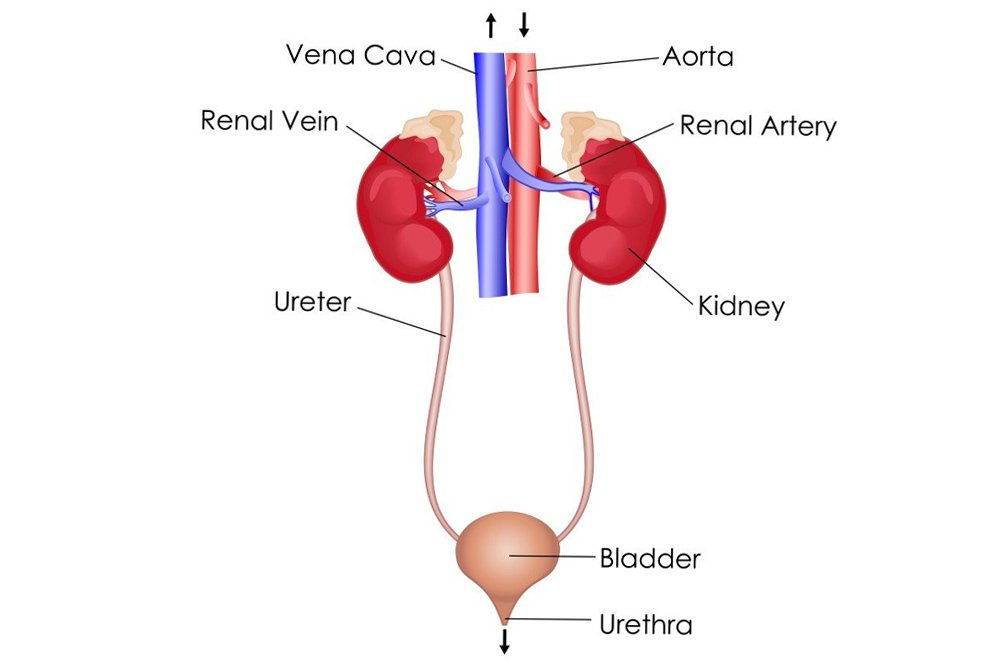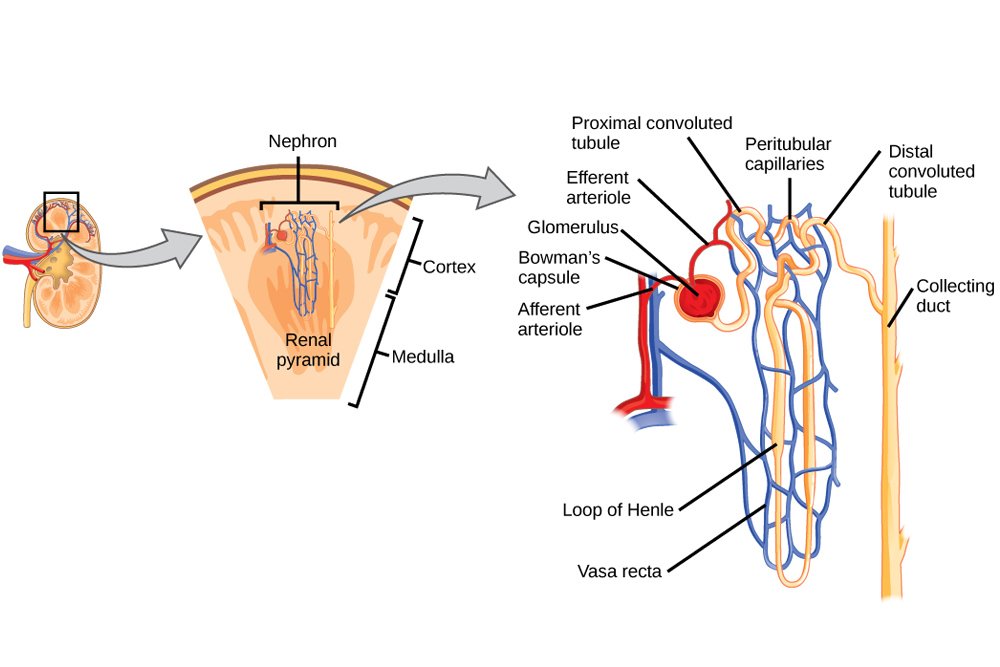The excretory system is a system of organs that eliminates waste products from the body. The system consists of the kidneys, ureters, bladder, and urethra. The kidneys filter the blood and remove waste products and excess water from the body in the form of urine. The ureters carry urine from the kidneys to the bladder. The bladder stores urine until it is full and then expels it through the urethra.
Excretion is one of the most necessary and unavoidable processes for most living beings. We need to regulate the items we put into our body by regularly eliminating them, along with waste products, excess substances, water, etc. Most often, people include defecation and urination as part of the excretory system. However, defecating is usually studied under the digestive system, while urination is studied under the excretory system. Therefore, the excretory system can also be studied as the urinary system.
Kidney
Our kidneys are the organs responsible for the production of urine. We have a pair of kidneys located in our abdomen. The right kidney is slightly lower than the left one, so as to accommodate the liver. The kidneys can structurally be divided into 2 regions – an outer cortex and an inner medulla. The cortex is lighter in color than the medulla. The basic functional unit of the kidneys are the nephrons. Each kidney has over one million nephrons, which carry out the process of forming urine.

Also Read: Why Are Some Internal Organs On One Side Rather Than The Other?
Nephrons
Production of urine in the nephrons occurs due to the close functioning of the nephrons and the renal blood vessels. The blood enters through the renal artery, which divides to form arterioles. This forms an extensive network known as the glomerulus, which fits in a part of the nephron known as the Bowman’s Capsule. The width of the afferent arterioles – which bring blood to the Bowman’s Capsule – is wider than the efferent arterioles – which take the blood away. This causes a pressure gradient, thus forcing water through the semi-permeable membrane of the Bowman’s Capsule. This process is known as ultrafiltration. The filtered water is known as the glomerular filtrate.
The Bowman’s Capsule then leads down a tubule known as the proximal convoluted tubule (PCT), followed by the Loop of Henle, and then the distal convoluted tubule (DCT). These 3 parts of the nephron are responsible for the reabsorption of water and other salts back into the blood. This is controlled by the amount of water in the blood stream and by the endocrine system. Enzymes like ADH (anti-diuretic hormone) play a role in deciding the amount of water that is reabsorbed back into the bloodstream.
DCT leads to the collecting ducts, which collect all the urine. No reabsorption of substances takes place here, as they merely facilitate the transfer of the formed urine. Most parts of the nephrons are located in the cortex, while the Loop of Henle descends into the medulla before entering the cortex once again.

Also Read: Why Don’t We Pee When We’re Asleep?
Excretion
The collecting ducts eventually empty into a vessel that forms the ureter. This exits the kidney from a point known as the hilum. The ureters carry the urine formed to the urinary bladder, which is a sac-like structure used for the storage of urine. This leads to the urethra, which is the tube connecting the bladder to the external environment of the body.
Sphincter muscles are ring-shaped muscles located at the junction of the bladder and the urethra. These give us control over our micturating (the act of expelling urine)
It is important to keep in mind that the nephrons don’t just reabsorb substances; they also secrete molecules into the urine. For instance, diabetes can be detected by checking one’s urine sample because sugar is secreted into the urine. Even certain drugs and medications are secreted into the urine that is forming, thus leading to their detection.
How well do you understand the article above!

